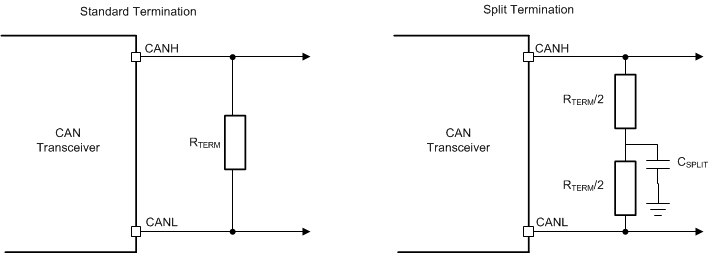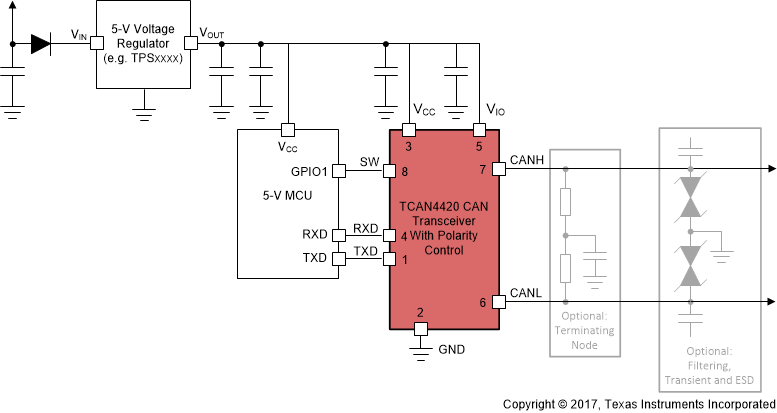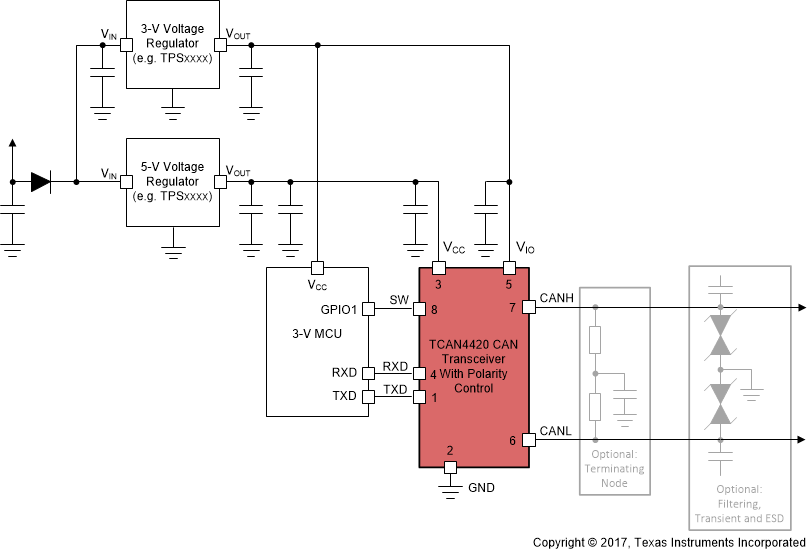JAJSEB2 December 2017 TCAN4420
PRODUCTION DATA.
- 1 特長
- 2 アプリケーション
- 3 概要
- 4 改訂履歴
- 5 Pin Configuration and Functions
- 6 Specifications
- 7 Parameter Measurement Information
- 8 Detailed Description
- 9 Application and Implementation
- 10Power Supply Recommendations
- 11Layout
- 12デバイスおよびドキュメントのサポート
- 13メカニカル、パッケージ、および注文情報
パッケージ・オプション
デバイスごとのパッケージ図は、PDF版データシートをご参照ください。
メカニカル・データ(パッケージ|ピン)
- D|8
サーマルパッド・メカニカル・データ
発注情報
9.2.2.1 CAN Termination
The ISO 11898 standard specifies the interconnect to be a twisted-pair cable (shielded or unshielded) with 120-Ω characteristic impedance (ZO). Resistors equal to the characteristic impedance of the line must be used to terminate both ends of the cable to prevent signal reflections. Unterminated drop lines, stubs, connecting nodes to the bus must be kept as short as possible to minimize signal reflections. The termination may be on the cable or in a node, but if nodes may be removed from the bus, the termination must be carefully placed so that it is not removed from the bus
Termination may be a single 120-Ω resistor at the end of the bus either on the cable or in a terminating node. If filtering and stabilization of the common mode voltage of the bus is desired, then split termination may be used, see Figure 16. Split termination improves the electromagnetic emissions behavior of the network by eliminating fluctuations in the bus common-mode voltages.
 Figure 16. CAN Bus Termination Concepts
Figure 16. CAN Bus Termination ConceptsThe TCAN4420 transceiver supports both 5-V only applications and applications where level shifting is needed for a 3.3-V microcontroller. See Figure 17 and Figure 18 for application examples.
 Figure 17. Typical CAN Bus Application Using TCAN4420 with 5 V µC
Figure 17. Typical CAN Bus Application Using TCAN4420 with 5 V µC Figure 18. Typical CAN Application Using TCAN4420 with 3.3 V µC
Figure 18. Typical CAN Application Using TCAN4420 with 3.3 V µC